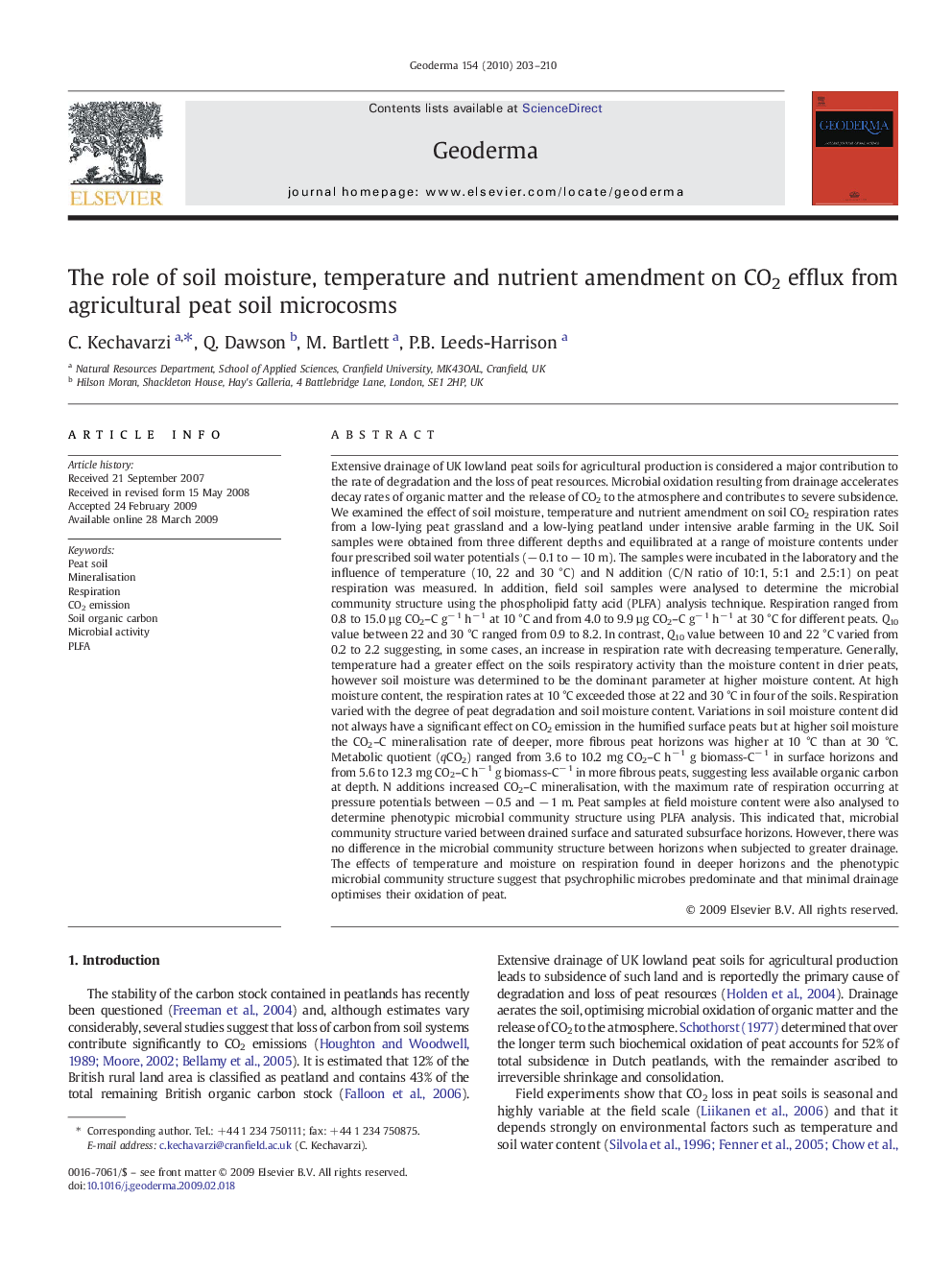| کد مقاله | کد نشریه | سال انتشار | مقاله انگلیسی | نسخه تمام متن |
|---|---|---|---|---|
| 4574987 | 1629525 | 2010 | 8 صفحه PDF | دانلود رایگان |

Extensive drainage of UK lowland peat soils for agricultural production is considered a major contribution to the rate of degradation and the loss of peat resources. Microbial oxidation resulting from drainage accelerates decay rates of organic matter and the release of CO2 to the atmosphere and contributes to severe subsidence. We examined the effect of soil moisture, temperature and nutrient amendment on soil CO2 respiration rates from a low-lying peat grassland and a low-lying peatland under intensive arable farming in the UK. Soil samples were obtained from three different depths and equilibrated at a range of moisture contents under four prescribed soil water potentials (− 0.1 to − 10 m). The samples were incubated in the laboratory and the influence of temperature (10, 22 and 30 °C) and N addition (C/N ratio of 10:1, 5:1 and 2.5:1) on peat respiration was measured. In addition, field soil samples were analysed to determine the microbial community structure using the phospholipid fatty acid (PLFA) analysis technique. Respiration ranged from 0.8 to 15.0 µg CO2–C g− 1 h− 1 at 10 °C and from 4.0 to 9.9 µg CO2–C g− 1 h− 1 at 30 °C for different peats. Q10 value between 22 and 30 °C ranged from 0.9 to 8.2. In contrast, Q10 value between 10 and 22 °C varied from 0.2 to 2.2 suggesting, in some cases, an increase in respiration rate with decreasing temperature. Generally, temperature had a greater effect on the soils respiratory activity than the moisture content in drier peats, however soil moisture was determined to be the dominant parameter at higher moisture content. At high moisture content, the respiration rates at 10 °C exceeded those at 22 and 30 °C in four of the soils. Respiration varied with the degree of peat degradation and soil moisture content. Variations in soil moisture content did not always have a significant effect on CO2 emission in the humified surface peats but at higher soil moisture the CO2–C mineralisation rate of deeper, more fibrous peat horizons was higher at 10 °C than at 30 °C. Metabolic quotient (qCO2) ranged from 3.6 to 10.2 mg CO2–C h− 1 g biomass-C− 1 in surface horizons and from 5.6 to 12.3 mg CO2–C h− 1 g biomass-C− 1 in more fibrous peats, suggesting less available organic carbon at depth. N additions increased CO2–C mineralisation, with the maximum rate of respiration occurring at pressure potentials between − 0.5 and − 1 m. Peat samples at field moisture content were also analysed to determine phenotypic microbial community structure using PLFA analysis. This indicated that, microbial community structure varied between drained surface and saturated subsurface horizons. However, there was no difference in the microbial community structure between horizons when subjected to greater drainage. The effects of temperature and moisture on respiration found in deeper horizons and the phenotypic microbial community structure suggest that psychrophilic microbes predominate and that minimal drainage optimises their oxidation of peat.
Journal: Geoderma - Volume 154, Issues 3–4, 15 January 2010, Pages 203–210